10 Military Rations and Packaging That Survived the Decades
Military rations have always been designed to last through tough conditions and long storage. Some of these meals and their packaging have stood the test of time, showing the strength of their design. From tins to vacuum-sealed packs, the variety is wide and fascinating. These items carry stories of soldiers and the conditions they lived through.
This post may contain affiliate links, which helps keep this content free. Please read our disclosure for more info.
WWII U.S. Army C-Ration
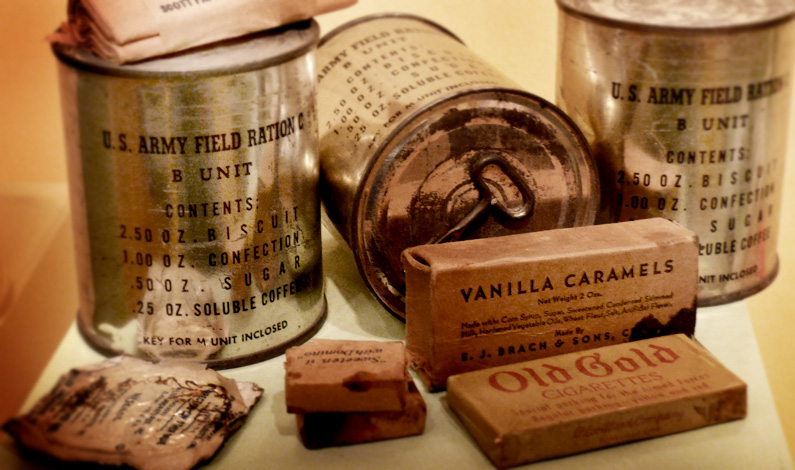
The C-Ration was developed in 1940 for soldiers in combat situations, providing a compact and portable source of food. It typically contained canned meat, crackers, and a dessert, along with a beverage and other items like cigarettes. The metal cans and sealed packaging ensured that the contents could survive tough conditions. Over time, the preservation methods and the cans’ durability helped these rations last for decades. Original C-Rations today can be valued between $50 and $150 depending on their condition and completeness.
The C-Ration was an essential item for U.S. soldiers during World War II, offering a basic yet sustaining meal. The rations were designed for ease of consumption and minimal preparation, making them vital during battle. Today, C-Rations are highly collectible, with vintage items sometimes being sold to military memorabilia collectors. The packaging and content quality have stood the test of time, ensuring that many are still intact despite being over 70 years old. The appeal lies in both their historical significance and the rarity of well-preserved examples.
U.S. Army D-Ration (Chocolate Bar)
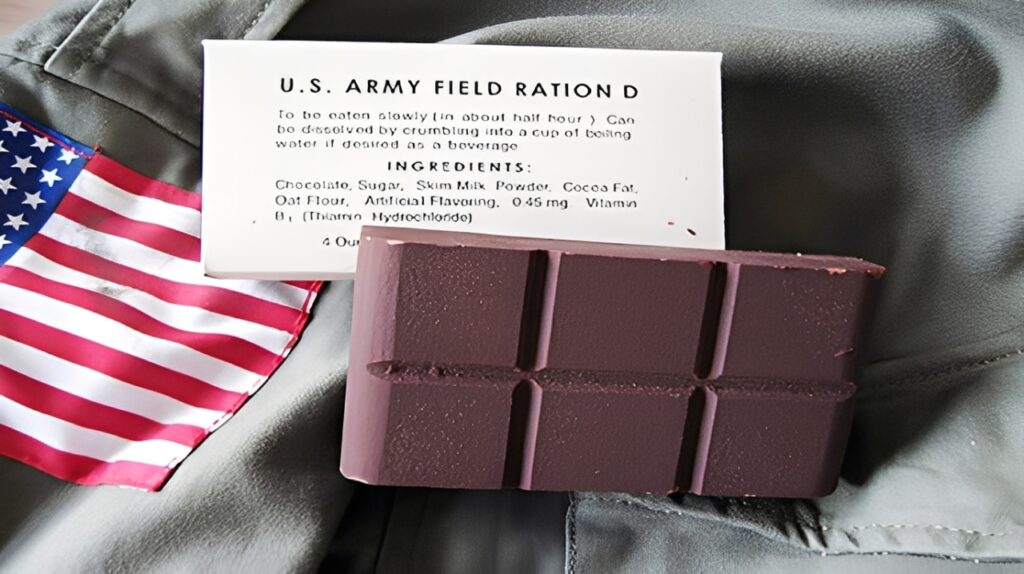
The D-Ration was developed during World War II to provide soldiers with a high-calorie snack that could withstand extreme temperatures. It was a dense, high-calorie chocolate bar, designed to be tough and provide soldiers with the energy needed for long days. The formula allowed it to remain stable in varying climates, particularly in hot weather. The bars’ packaging, along with their durable composition, helped them last for decades. Vintage D-Rations can be valued at $100 to $200 if unopened and in good condition.
Initially, the D-Ration was not meant for indulgence but as a practical, energy-boosting food for soldiers. Its ability to withstand high temperatures and remain shelf-stable made it a valuable item in wartime rations. Today, these chocolate bars are sought after by collectors and history enthusiasts. They represent a unique part of wartime history and are often featured in military exhibitions. As a rare and well-preserved item, a D-Ration chocolate bar has significant value.
WWII U.S. Army K-Ration
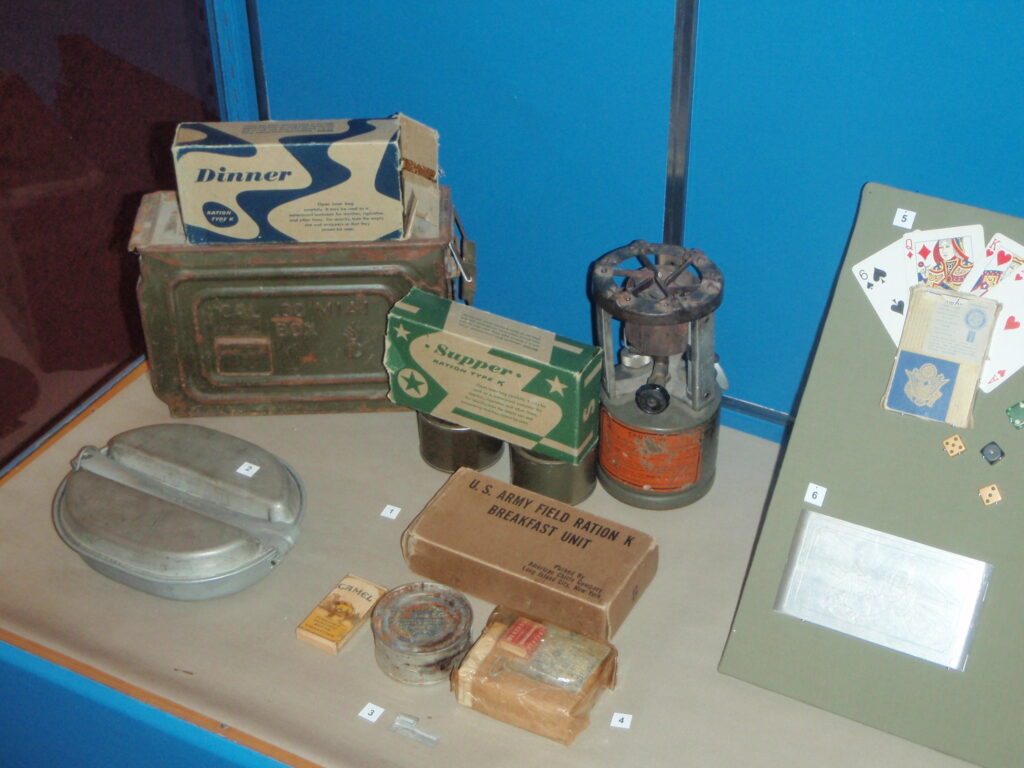
Introduced in 1942, the K-Ration was designed for paratroopers and infantrymen who needed lightweight and compact food supplies. The ration typically included canned meat, crackers, and a powdered beverage, all packed in a small, easy-to-carry box. The K-Ration’s sealed packaging helped preserve the contents for long periods, making it ideal for long missions. Over the decades, many of these rations have remained intact due to the sturdy packaging and durable cans. Depending on condition, original K-Rations can be valued between $75 and $250.
The K-Ration was specifically developed to meet the needs of soldiers on the move, ensuring they had enough nourishment without carrying excessive weight. Its compact size and easy-to-open design made it an essential item during WWII. Today, K-Rations are considered collectibles, often purchased by military enthusiasts and those interested in wartime history. Their durability and practical design have allowed them to remain functional even after many years. Collectors seek these rations for their historical value and their rarity.
U.S. Army MCI (Meal, Combat, Individual)
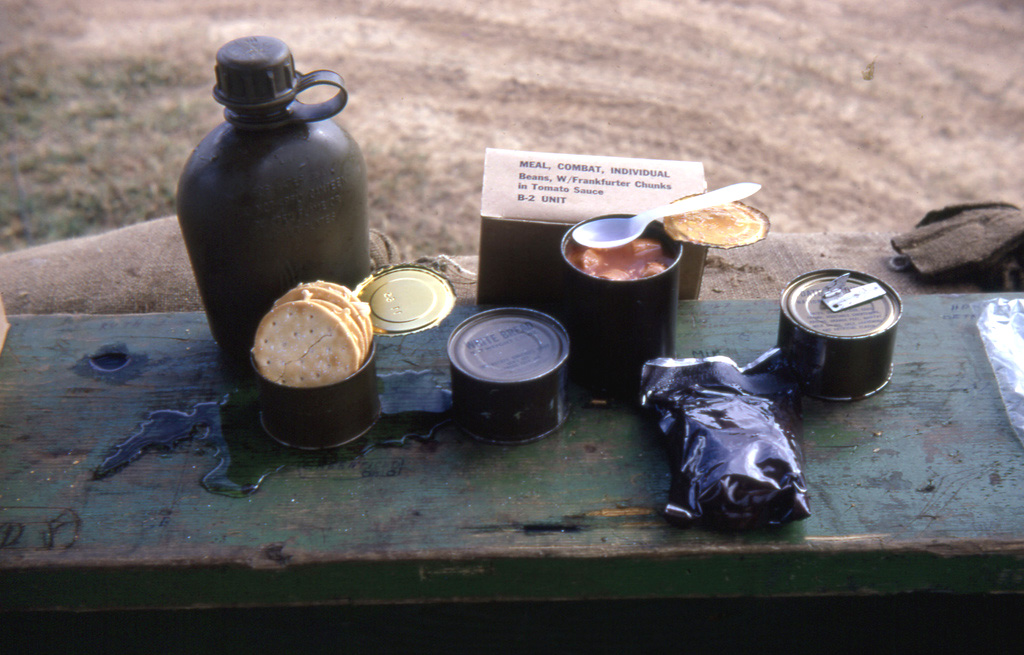
The MCI, introduced in the late 1950s, was designed to replace the C-Ration, offering more variety and convenience for soldiers in the field. It included canned entrees, crackers, and a dessert, along with a beverage and other accessories. The metal cans and sealed containers ensured the food remained preserved for long periods. Over the years, the packaging and design of the MCI have made it one of the longest-lasting military rations. Vintage MCIs can range from $50 to $150, depending on their condition and completeness.
The MCI offered more variety and improved nutritional value compared to previous rations, making it a popular choice among soldiers. It was a significant advancement in military food technology, providing a more complete and balanced meal. Today, the MCI is considered a collectible item, with many looking for the early versions from the 1960s and 1970s. The preservation methods used in the packaging have ensured that many MCIs remain intact. These rations hold historical value for both their role in military operations and their lasting impact on military food.
U.S. Army MRE (Meal, Ready-to-Eat)
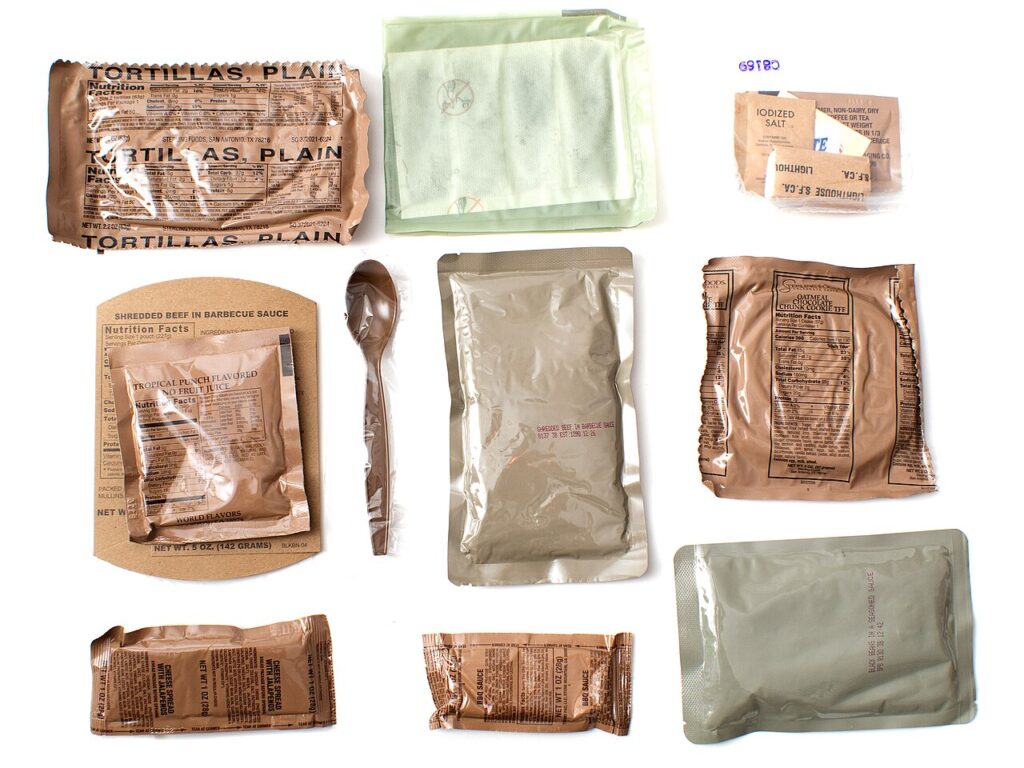
Introduced in 1981, the MRE was developed to be a self-contained, ready-to-eat meal for soldiers in the field. Each MRE contains a main entree, side dish, dessert, and accessories, all packed in a vacuum-sealed pouch. The durable packaging and flameless ration heater make it possible for soldiers to heat the meal without needing fire or electricity. The MRE’s long shelf life and portability have made it a staple of modern military rations. Current MREs are priced between $10 and $20 per meal.
The MRE was designed to meet the needs of soldiers who were deployed in various conditions, offering a balanced and quick meal. Its ability to be eaten without preparation made it ideal for combat situations. Over time, the MRE has evolved, but its basic concept of providing a complete meal in a compact form has remained unchanged. Today, MREs are commonly used in military operations, disaster relief efforts, and outdoor activities. They are highly regarded for their practicality and ability to last for years without spoiling.
U.S. Army 10-in-1 Ration
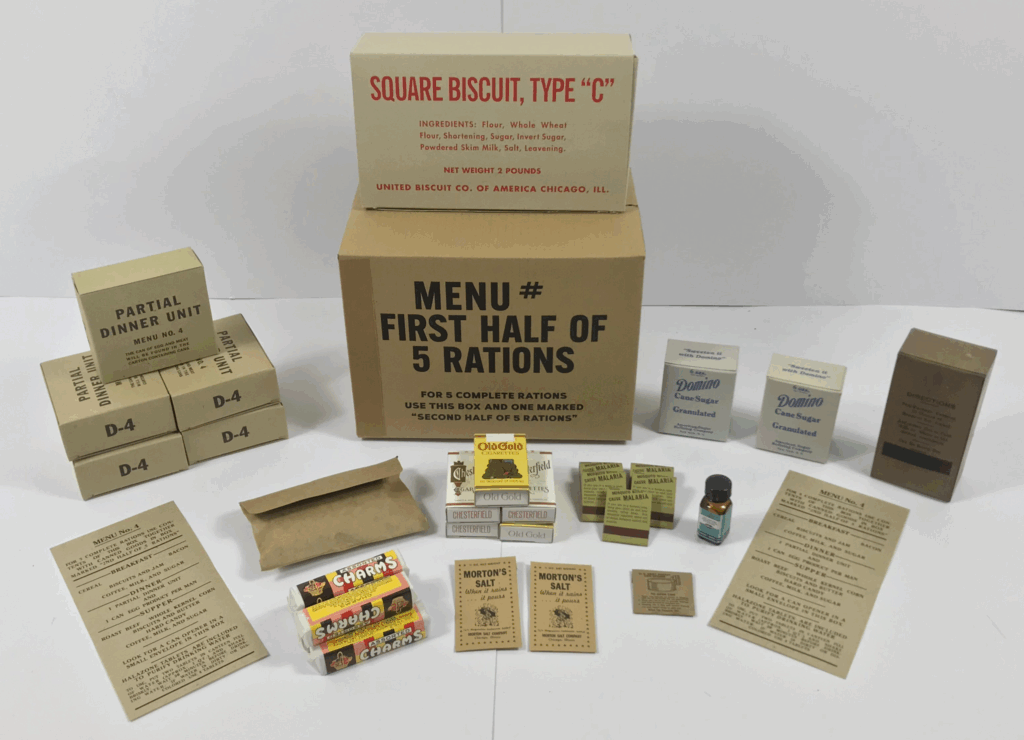
The 10-in-1 ration was developed during WWII to provide meals for groups of soldiers. It was designed to serve up to ten men and included a variety of canned meats, vegetables, and other food items. The ration was packed in large boxes and sealed to maintain freshness. The durability of the packaging and the variety of the food helped it last for many years. A complete 10-in-1 ration can be valued between $200 and $500, depending on condition and rarity.
These rations were created for group feeding, ensuring that soldiers could be fed in large units without carrying individual meals. The assortment of food items included in each box made it easier to meet the varied dietary needs of the troops. While not as portable as individual rations, the 10-in-1 ration was a vital part of the logistics chain during WWII. Today, these rations are considered rare collector’s items, especially when they are in good condition. Collectors value them for their historical significance and unique packaging.
U.S. Army 5-in-1 Ration
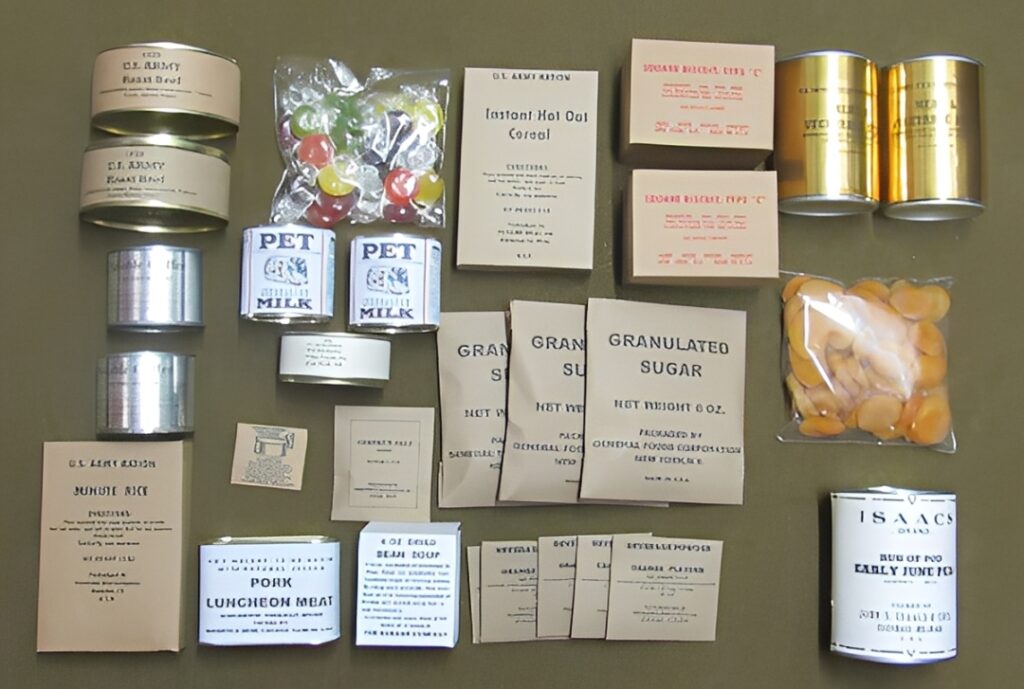
The 5-in-1 ration, introduced during WWII, was a smaller version of the 10-in-1 ration designed to feed five soldiers. It contained a similar assortment of canned meats, crackers, and other food items. The ration was packed in sealed boxes that protected the contents from contamination and spoilage. Over the years, the packaging and food items have remained intact, making it a valuable historical item. Vintage 5-in-1 rations can be valued at $150 to $400, depending on their condition and completeness.
The 5-in-1 ration was created for smaller groups of soldiers, providing the same variety and nutritional value as the 10-in-1 ration. It was a more portable solution for troops who did not require a larger group meal. Despite its smaller size, the 5-in-1 ration was just as effective in providing sustenance during long missions. Today, these rations are highly collectible, with original examples being sought after by military enthusiasts. The sealed packaging ensures that many of these rations have survived for decades.
Swiss Military Biscuit
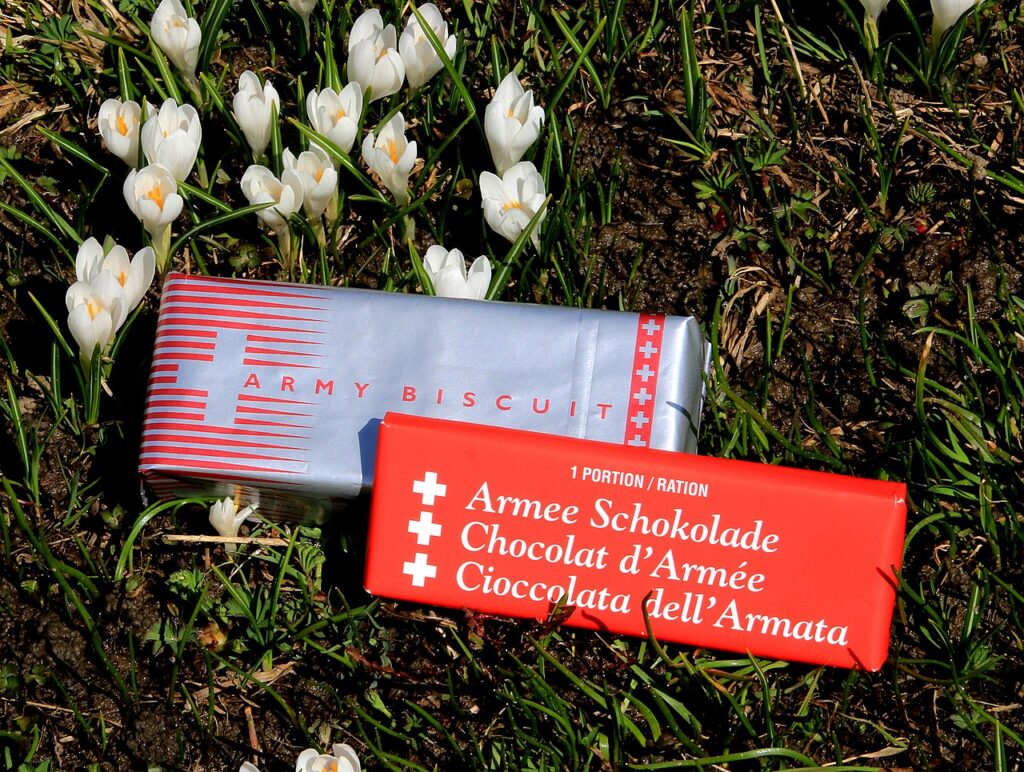
The Swiss military biscuit was introduced in 1959 as a replacement for the earlier Zwieback used in military rations. Made from wheat flour, potato starch, and other ingredients, these biscuits were designed to be long-lasting and nutritious. The packaging was designed to protect the biscuits from moisture and other environmental factors. Swiss military biscuits have an impressive shelf life of up to three years, which has helped them survive the decades. Current Swiss military biscuits are typically priced between $5 and $10 per package.
These biscuits were developed to provide a compact, durable source of energy for Swiss soldiers in the field. Their long shelf life and the simple, hearty ingredients made them perfect for military use. Today, the Swiss military biscuit is enjoyed by both soldiers and civilians in Switzerland. Its durability and practicality have ensured that it remains a staple in military rations. While not as collectible as other rations, these biscuits still hold some historical value, especially to collectors of military memorabilia.
U.S. Army Flameless Ration Heater (FRH)
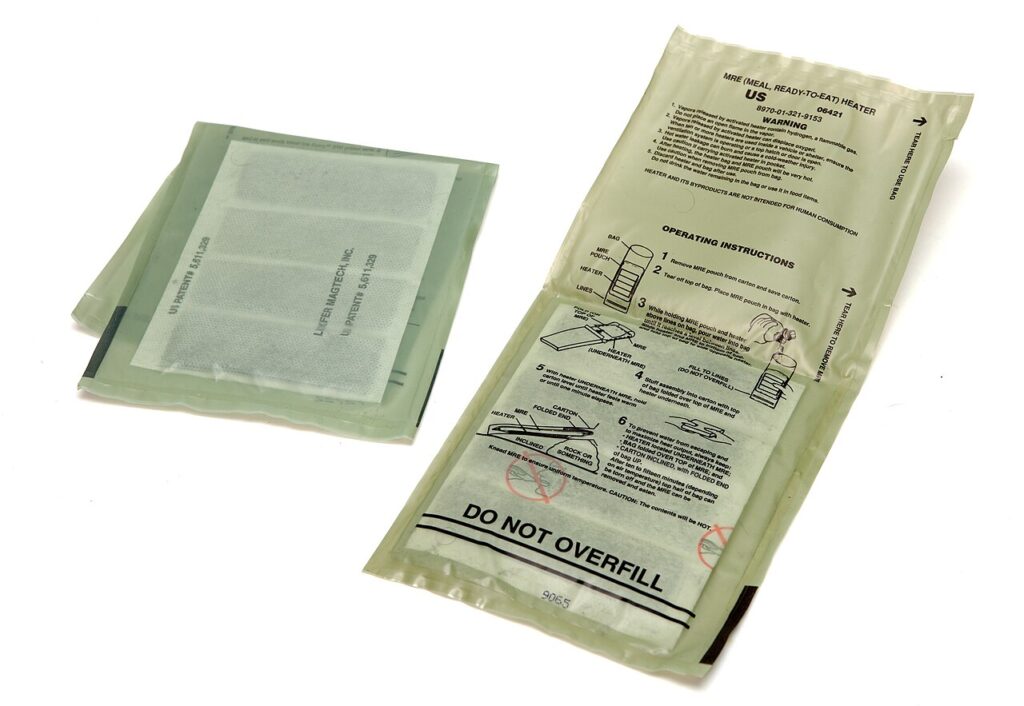
The Flameless Ration Heater (FRH) was developed in 1990 to heat meals in the field without the need for an open flame. The FRH works by creating a chemical reaction between magnesium and iron powders, which generates heat. This allows soldiers to enjoy hot meals even in remote locations without carrying fuel or starting a fire. The FRH is included with every MRE and is designed to be safe, lightweight, and portable. Current FRHs are typically priced between $2 and $5 each.
The FRH revolutionized the way military rations were consumed in the field, providing a safe and efficient way to heat meals. Its compact design and ability to work without a flame made it ideal for combat zones and other hazardous environments. Over time, the FRH has become an essential tool in the modern military, and it continues to be a part of every MRE. The simplicity and effectiveness of the FRH have made it a lasting and reliable product. Today, the FRH is considered a standard item in most military and disaster relief rations.
U.S. Army Cold Weather Ration
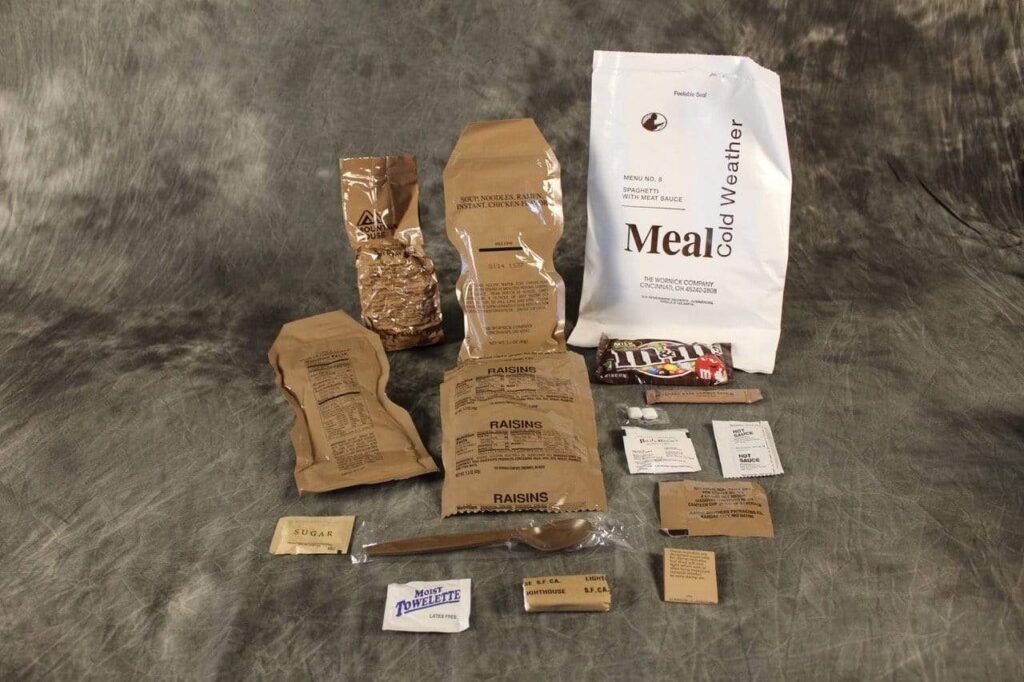
The U.S. Army Cold Weather Ration was specifically designed for troops stationed in freezing environments. This ration included high-calorie foods like chocolate, nuts, and freeze-dried soups that could help soldiers maintain energy in harsh conditions. The packaging was built to withstand extreme cold temperatures and preserve the food for extended periods. Cold Weather Rations were used during the Korean War and in areas where the weather posed a risk to troop health and performance. Vintage rations can be valued between $150 and $400 depending on the condition of the items and packaging.
These rations provided essential nourishment in environments where traditional meals would freeze or spoil. The packaging’s durability and ability to maintain food safety in extreme temperatures made them indispensable during cold-weather operations. Today, these rations are a sought-after item for military collectors, especially those focusing on Cold War-era military artifacts. The combination of practicality and the history behind these rations makes them valuable to collectors.
The survival of military rations over many decades demonstrates the effectiveness of their packaging and design. These rations have provided vital sustenance to soldiers in some of the most difficult environments imaginable. Today, they stand as enduring symbols of military ingenuity and history.
This article originally appeared on Avocadu.
